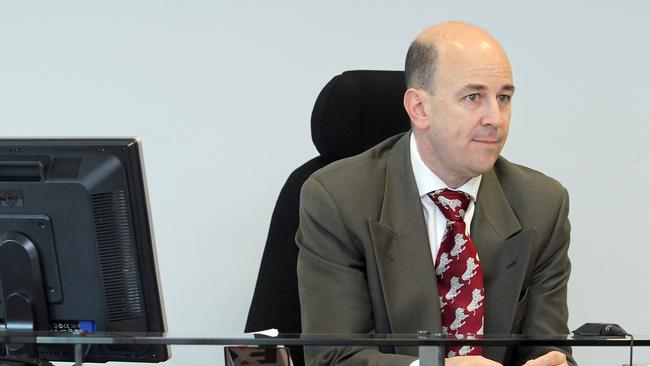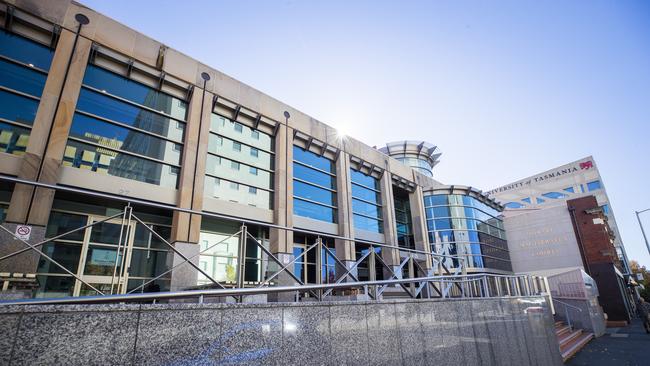‘Wasn’t us’: Senior Magistrate’s concern about reporter lock-out in Gregory Geason case
A senior magistrate expressed concern about who should take the blame for the decision to lock reporters out of the Gregory Geason case.

Tasmania
Don't miss out on the headlines from Tasmania. Followed categories will be added to My News.
A senior magistrate expressed concern that judicial officers should not take the blame for the decision to lock reporters out of a criminal case involving a Supreme Court judge.
A Mercury request, under Right to Information request, about the decision to exclude the media from a case involving Justice Gregory Geason yielded 631 pages of documents from the Department of Justice.
The after-hours hearing was held at the Hobart Magistrates Court on December 1.
The decision was blamed on a misunderstanding and a shortage of court security staff.
The documents reveal that acting Chief Magistrate Michael Daly asked for an urgent briefing shortly after the court adjourned and the story hit news websites.
“Could someone contact me about this ASAP?” he wrote.

In a subsequent exchange, Magistrate Daly said if he put his name on a statement, people might think it was the magistrate who heard the case that locked reporters out.
“This is difficult. Transparency would require disclosure that the decision was administrative not judicial: there is no judicial component to any of this,” he wrote.
“But if the statement is from me, it has to say ‘ … decision by the Court administration’”.
“This is because ‘the court’ here is actually the magistrate who heard the matter and that judicial officer would have a thing or two to say to me if the press release said it was his decision that caused media not to be able to view proceedings.
“I am extremely squeamish about defenestrating the Administrator. But if the Administrator is the author, these issues disappear.”
The court administrator, Yolanda Prenc, agreed to take the blame.
“Entirely comfortable that the response is from me as Administrator. This has all resulted
from my initial decision, so more than happy and content that the apology ought to come
from me,” she wrote.
Although the justice system did not have enough security guards to open the court, it was able to muster around a dozen people to edit and approve a media release explaining the decision: including the Justice Department Secretary and Deputy Secretary, the Director of Government Communications, the Attorney-General’s chief of staff and multiple government and departmental media advisers.

The documents also reveal that Justice Department Secretary Ginna Webster was initially pleased with the way the case was handled.
“I think everyone did a great job under the circumstances,” she wrote.
“It was always going to be a story with high media interest and we were dealing with an unprecedented situation.”
The Administrator of Courts subsequently issued the statement admitting the decision lock reporters out was incorrect and apologised.
The documents also reveal concerns among media outlets about continued difficulty in accessing information from Tasmania’s court system that is routinely available in other states.
“We, along with other media organisations, are deeply concerned about the reduction in access to public information from the courts in recent months,” wrote one news editor.
“Does the Magistrates Court usually run protection rackets for high profile people or just judges?’ one reporter asked the Department of Justice, according to the documents.
If an answer was given to that question, it is was not captured by the Mercury’s RTI request.





